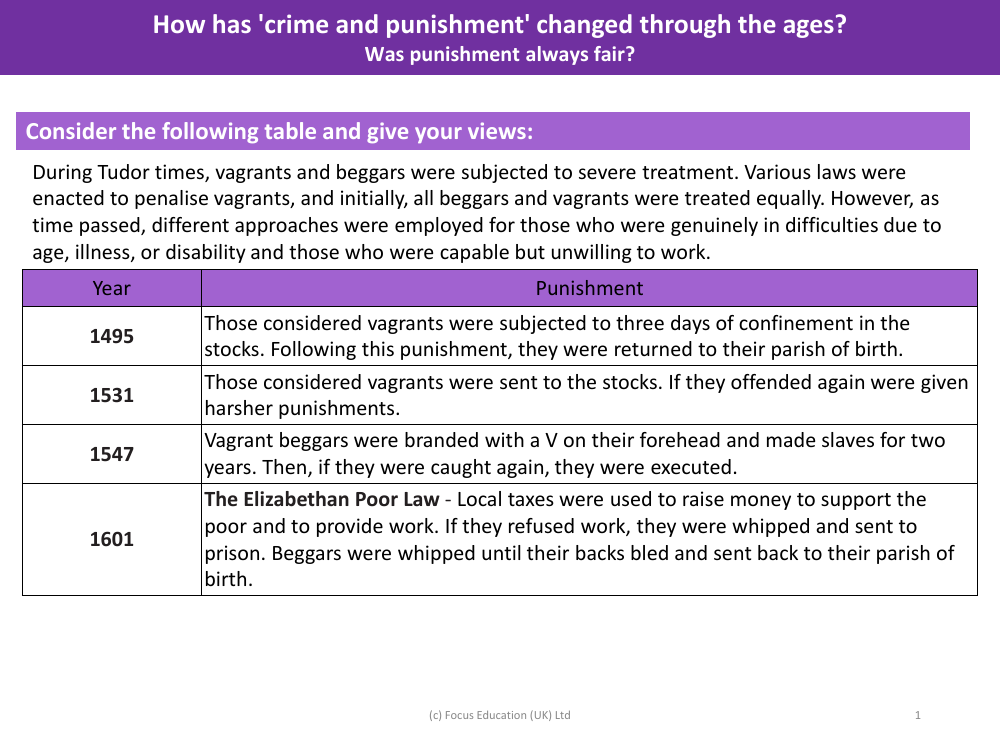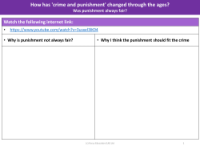Consider the table and give your views - Worksheet - Year 5

History Resource Description
The table presents a historical overview of the treatment and punishment of vagrants and beggars during the Tudor period in England, illustrating a shift in societal attitudes and legal responses over time. Initially, in 1495, the punishment was relatively uniform with vagrants being confined to the stocks for three days before being sent back to their birth parish. This suggests a punitive approach aimed at public humiliation and deterrence, without addressing the underlying social issues leading to vagrancy and begging.
As the years progressed, the severity of punishments escalated, with the 1547 law branding vagrants and enslaving them, indicating a harsh and brutal response to what was essentially a social problem. By 1601, the introduction of the Elizabethan Poor Law marked a significant change, where local taxes were levied to support the impoverished and provide work, though refusal to work still resulted in whipping and imprisonment. This shift reflects a growing recognition of the state's responsibility towards its destitute citizens, albeit still coupled with punitive measures for non-compliance. The fairness of these punishments is questionable, as they often did not distinguish between those who were unable to work due to valid reasons and those who chose not to, and the harshness of the punishments was extreme. Overall, these historical practices highlight the evolution of 'crime and punishment' from purely punitive to a more structured, albeit still flawed, system that began to incorporate welfare elements.



